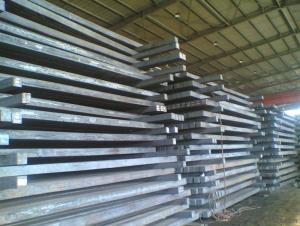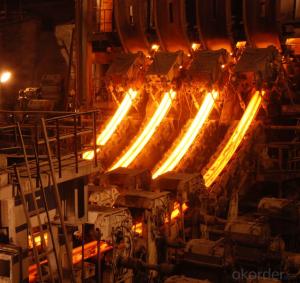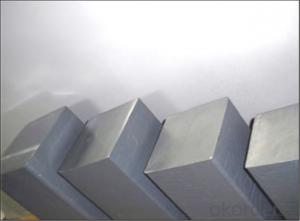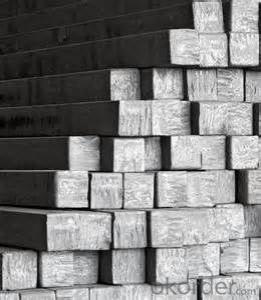Square Steel Billet Q235 3SP Grade Prime Quality 12#
- Loading Port:
- Tianjin
- Payment Terms:
- TT OR LC
- Min Order Qty:
- 2000 m.t
- Supply Capability:
- 50000 m.t/month
OKorder Service Pledge
OKorder Financial Service
You Might Also Like
Description of Square Steel Billet Q235 3SP Grade Prime Quality 12#
M. S. Billets are used for rolling of TMT Re-Bars of Fe415 and Fe500 Grade and various other structural steel products.
CRS Billets are used for rolling of CRS TMT Re-Bars.
Special Alloy Billets are used for rolling of any special grade TMT Re-Bars like Earthquake resistant TMT Re-Bars and for special grade structural steel products.
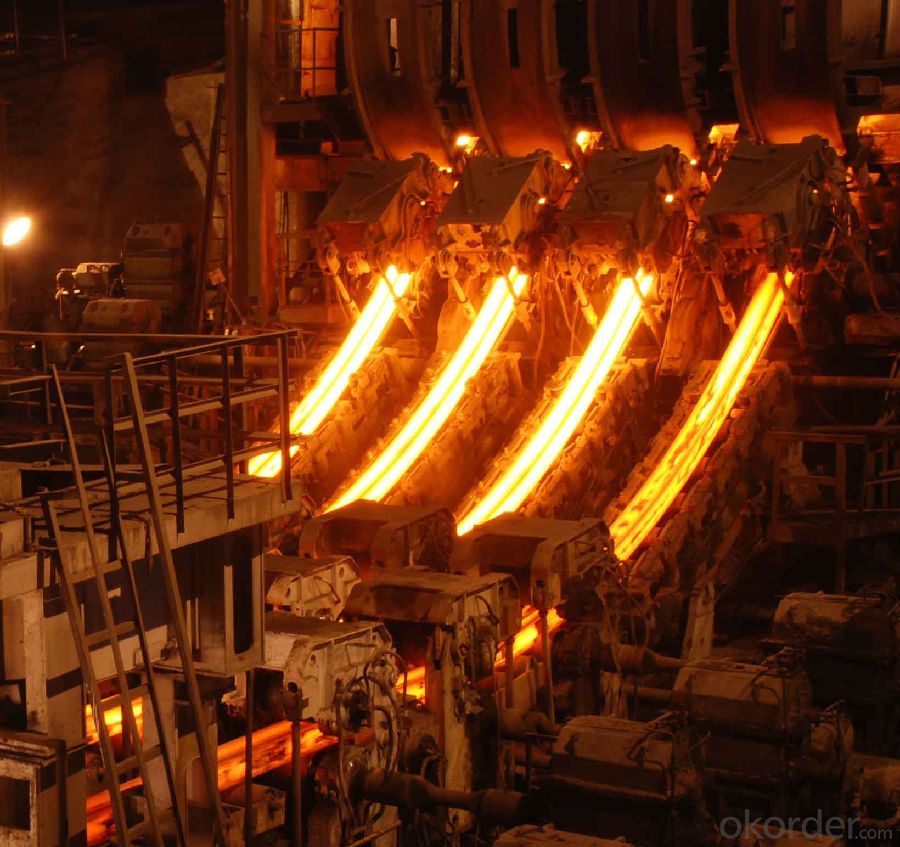
Main Feature Square Steel Billet Q235 3SP Grade Prime Quality 12#
Raw elements(C,Fe,Ni,Mn,Cr,Cu.)---Smelted ingots by AOD finery---hot rolled into black suface---pickling in acid liquid---cold drawn----polished by automatically machine--- cutting into pieces---checking quanlity
Applications of Square Steel Billet Q235 3SP Grade Prime Quality 12#
Widely Used in the areas such as Stainless Steel Fasteners, Chains, Kitchen and Sanitary wares, Furniture handles, Handrails, Electroplating and Electrolyzing pendants, Foods, Electron, Petroleum, Construction and Decoration, etc. Products have a high strength after cold-working. Electronic products parts, Medical appliance, Springs, Bus Inside and Outside packaging and building, Street Lamp Posts, etc. Decoration materials and Outdoor Publicity Billboard. Used for the products which have the Anti-Stress Corrosion requirement. Electron Products, Table-wares, Bolts, Nuts, Screen Meshes, Cumbustors and so on.
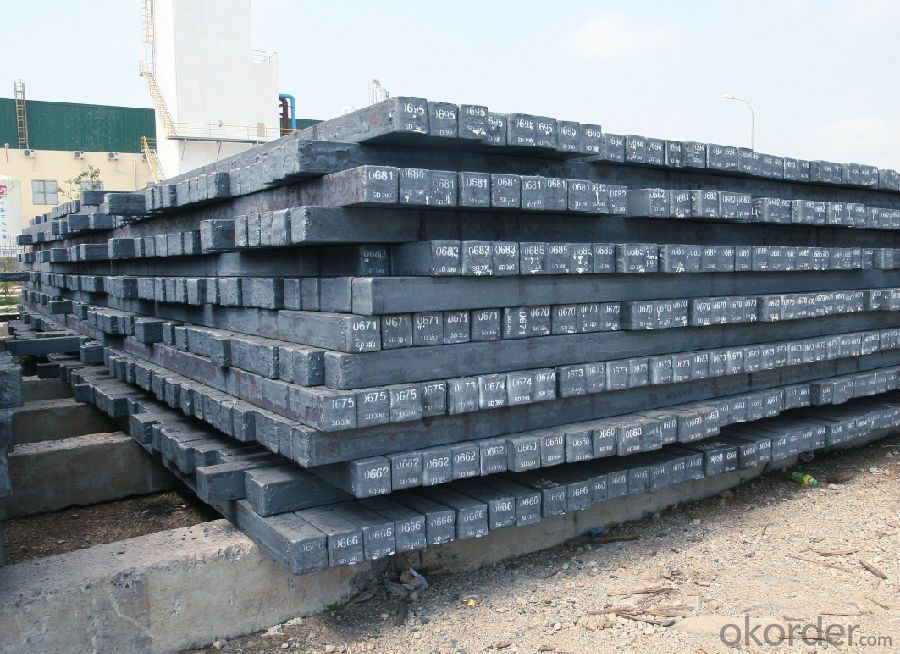
Specifications of Square Steel Billet Q235 3SP Grade Prime Quality 12#
| Standard | C(%) | Mn(%) | S(%) | P(%) | Si(%) |
| Q195 | ≤0.12 | ≤0.50 | ≤0.040 | ≤0.035 | ≤0.30 |
| Q235 | ≤0.20 | ≤1.40 | ≤0.045 | ≤0.045 | ≤0.35 |
| Q275 | ≤0.22 | ≤1.50 | ≤0.045 | ≤0.045 | ≤0.35 |
| 20MnSi | 0.17-0.25 | 1.2-1.6 | ≤ 0.050 | ≤ 0.050 | 0.40-0.80 |
| 3SP | 0.14-0.22 | 0.40-0.85 | ≤ 0.050 | ≤ 0.040 | 0.05-0.15 |
| 5SP | 0.28-0.37 | 0.50-1.00 | ≤ 0.050 | ≤ 0.040 | 0.15-0.30 |
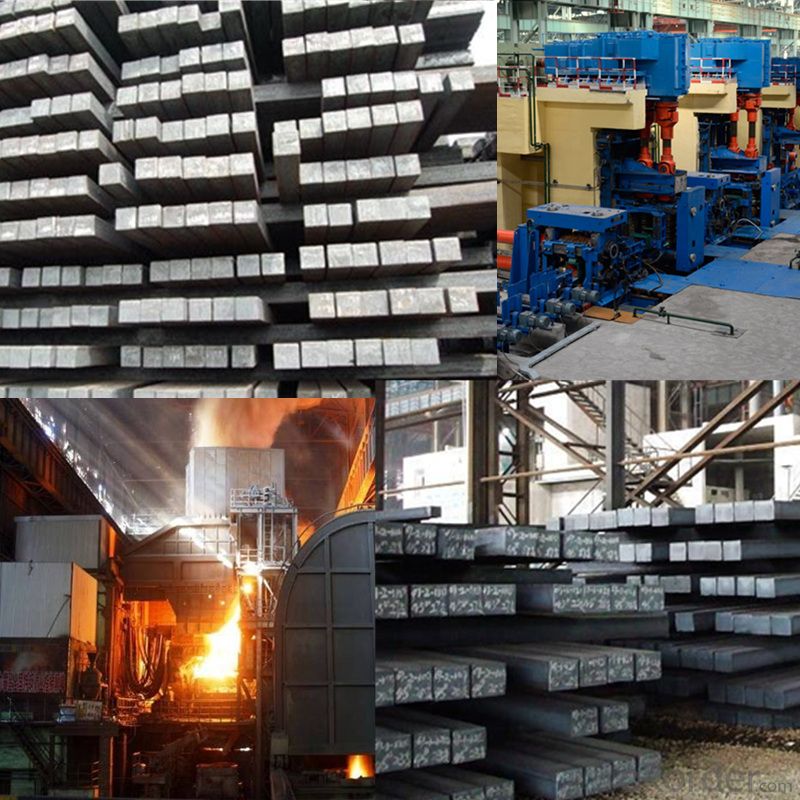
FAQ of Square Steel Billet Q235 3SP Grade Prime Quality 12#
We have organized several common questions for our clients,may help you sincerely:
1. How Can I Visit There?
Our company is located in Tianjin City, China, near Beijing. You can fly to Tianjin Airport Directly. All our clients, from home or aboard, are warmly welcome to visit us!
2. How Can I Get Some Sample?
We are honored to offer you sample.
3. Why choose CNBM?
Our delivery time about 15-20days for standard sizes, if you have other requirements like hardness, quanity and width ,it is about 20-40days. But don't worry we also try our best for the delivery time ,because time longer and our cost is higher.
- Q:What are the different types of steel billet handling equipment?
- Some different types of steel billet handling equipment include overhead cranes, forklifts, conveyors, and magnetic lifting devices.
- Q:How are steel billets used in the manufacturing of aerospace components?
- Steel billets are used in the manufacturing of aerospace components as they are the raw material that undergoes various processes like forging, machining, and heat treatment to shape and strengthen them into specific aerospace parts such as engine components, landing gear, and structural parts.
- Q:What are the main factors affecting the tensile strength of steel billets?
- There are several main factors that affect the tensile strength of steel billets. Firstly, the composition of the steel plays a significant role. The presence of certain elements, such as carbon, manganese, and silicon, can greatly influence the strength of the steel. Carbon, in particular, is a key element in increasing the strength of steel through its ability to form strong interatomic bonds. Secondly, the heat treatment process employed during the production of steel billets is crucial. Heat treatment, such as quenching and tempering, can significantly enhance the tensile strength of the steel by manipulating its microstructure. Quenching involves rapidly cooling the steel, which creates a hardened structure, while tempering involves reheating the steel to a specific temperature to achieve the desired balance of hardness and toughness. Additionally, the grain size of the steel also affects its tensile strength. Fine-grained steel generally exhibits higher strength due to the increased number of grain boundaries, which act as barriers to dislocation movement. On the other hand, coarse-grained steel tends to have lower strength as it allows for easier dislocation movement. Moreover, the presence of impurities or defects in the steel can weaken its tensile strength. Inclusions, such as sulfur, phosphorus, and non-metallic inclusions, can act as stress concentration points and promote crack initiation, leading to reduced strength. Similarly, the presence of voids, porosity, or other structural defects can compromise the overall strength of the steel billets. Lastly, the processing conditions during the manufacturing of steel billets can affect their tensile strength. Parameters such as rolling and forging temperatures, deformation rate, and cooling rate can influence the resulting microstructure and, consequently, the strength of the steel. In conclusion, the main factors affecting the tensile strength of steel billets include the steel composition, heat treatment process, grain size, impurities or defects, and processing conditions. Understanding and optimizing these factors are crucial for producing steel billets with the desired mechanical properties.
- Q:How are steel billets used in the production of shipbuilding materials?
- Steel billets play a vital role in shipbuilding materials as they are necessary for producing strong and durable components. Shipbuilding requires materials that can withstand harsh marine conditions, and steel billets fulfill these requirements. To begin with, steel billets are utilized in the production of different types of steel plates. These plates form the basis of shipbuilding materials and are customized according to specific design needs, such as hull plating, bulkheads, decks, and superstructures. Steel billets provide the essential raw material for creating these plates, ensuring they possess the required strength and structural integrity. Furthermore, steel billets are crucial in manufacturing shipbuilding sections and profiles. These sections, including beams, angles, channels, and other structural components, provide support and reinforcement to the ship's structure. Steel billets are heated and shaped through processes like rolling, forging, or extrusion to form these sections. This allows for the creation of custom-shaped sections that seamlessly integrate into the ship's construction. Additionally, steel billets are also used in producing shipbuilding forgings, which are high-strength components requiring exceptional mechanical properties. Forgings are vital for critical ship parts like propeller shafts, rudder components, and engine parts. Steel billets are heated and shaped using forging techniques to create these components, ensuring they possess the necessary strength, toughness, and resistance to fatigue. In conclusion, steel billets are a fundamental raw material extensively used in shipbuilding. They are transformed into various forms such as plates, sections, and forgings, which are then incorporated into the construction of ships. The utilization of steel billets guarantees that shipbuilding materials meet the stringent requirements for strength, durability, and performance in marine environments.
- Q:How are steel billets used in the production of structural steel sections?
- Steel billets are used as a primary raw material in the production of structural steel sections. These billets are heated and then passed through a series of roller mills to shape them into various structural profiles such as beams, channels, angles, and columns. The hot rolling process helps to improve the strength and durability of the steel, making it suitable for construction purposes.
- Q:How are steel billets used in the production of automotive components?
- Steel billets are used in the production of automotive components as they are the raw material that is shaped, heated, and then forged or rolled into various shapes and sizes. These billets serve as the building blocks for manufacturing engine parts, suspension systems, chassis components, and other critical automotive parts that require high strength and durability.
- Q:What are the potential applications of steel billets in the medical aftermarket?
- The medical aftermarket offers a wide range of potential applications for steel billets. One important application is the manufacture of surgical instruments, such as scalpels, forceps, scissors, and orthopedic implants. Steel billets are capable of producing high-quality and durable surgical instruments due to the strength and corrosion resistance of steel. Furthermore, steel billets are also useful in the production of medical equipment and devices. For instance, they can be used to create components for X-ray machines, CT scanners, and MRI machines. The excellent conductivity and high strength-to-weight ratio of steel make it a suitable choice for these demanding applications. In addition, steel billets can be utilized in the manufacturing of medical furniture and fixtures. Steel is commonly employed in the construction of hospital beds, examination tables, and cabinets due to its durability and ease of maintenance. Steel billets can provide the necessary raw material for the production of these essential medical items. Moreover, steel billets can also be employed in the fabrication of prosthetics and orthotics. These devices often require materials that are both strong and lightweight to ensure proper functionality and comfort for patients. Steel billets can be processed into various shapes and sizes to create prosthetic limbs, braces, and other orthopedic devices. In summary, the diverse and crucial potential applications of steel billets in the medical aftermarket cannot be underestimated. From surgical instruments to medical equipment, furniture, and prosthetics, steel billets possess the necessary qualities of strength, durability, and corrosion resistance to meet the demanding requirements of the medical industry.
- Q:How do steel billets contribute to the overall thermal insulation of a structure?
- Steel billets do not contribute to the overall thermal insulation of a structure. In fact, steel is a good conductor of heat and can transfer heat quickly, making it a poor choice for thermal insulation.
- Q:How are steel billets used in the manufacturing of forgings?
- Steel billets are used in the manufacturing of forgings as they serve as the initial raw material. These billets are heated and then shaped using a variety of forging techniques such as hammering or pressing, resulting in the desired forged product. The high strength and malleability of steel make it an ideal material for forgings used in various industries, including automotive, aerospace, and construction.
- Q:What are the different types of surface defect detection equipment for steel billets?
- Steel billets have a variety of surface defect detection equipment available. These equipment are specifically designed to identify and analyze defects on the surface of steel billets, ensuring that only top-notch products are used for different applications. Some of the diverse types of surface defect detection equipment for steel billets include: 1. Ultrasonic Testing (UT): UT equipment utilizes sound waves to detect surface defects in steel billets. It emits high-frequency sound waves that penetrate the material and bounce back when they come across any surface irregularities. This method aids in the identification of cracks, voids, and other defects on the surface. 2. Eddy Current Testing (ECT): ECT equipment uses electromagnetic induction to detect surface defects in steel billets. It operates by passing an alternating current through a coil, generating a magnetic field that interacts with the conductive material of the billet. Any surface defect or irregularity causes a change in the magnetic field, which can be measured and analyzed. 3. Magnetic Particle Inspection (MPI): MPI equipment utilizes magnetic fields and iron particles to detect surface defects in steel billets. The billet is magnetized, and iron particles are applied to its surface. These particles gather around any surface defect, creating visible indications that can be easily identified and evaluated. 4. Visual Inspection: Visual inspection equipment involves the use of cameras, lasers, and other optical devices to detect surface defects in steel billets. These devices capture images or videos of the billet's surface, enabling inspectors to visually identify any irregularities or defects. 5. Thermographic Testing: Thermographic equipment uses infrared cameras to detect surface defects in steel billets by measuring temperature variations. Any defect causes a difference in heat transfer, resulting in distinct thermal patterns that can be detected and analyzed. 6. X-ray Inspection: X-ray inspection equipment employs X-ray radiation to penetrate the steel billet and detect internal and surface defects. It provides detailed images that allow inspectors to identify cracks, voids, and other defects that are not visible to the naked eye. In summary, these various types of surface defect detection equipment for steel billets offer a range of methods to ensure the quality and integrity of the billets, enabling manufacturers to deliver high-quality steel products to different industries.
1. Manufacturer Overview |
|
|---|---|
| Location | |
| Year Established | |
| Annual Output Value | |
| Main Markets | |
| Company Certifications | |
2. Manufacturer Certificates |
|
|---|---|
| a) Certification Name | |
| Range | |
| Reference | |
| Validity Period | |
3. Manufacturer Capability |
|
|---|---|
| a)Trade Capacity | |
| Nearest Port | |
| Export Percentage | |
| No.of Employees in Trade Department | |
| Language Spoken: | |
| b)Factory Information | |
| Factory Size: | |
| No. of Production Lines | |
| Contract Manufacturing | |
| Product Price Range | |
Send your message to us
Square Steel Billet Q235 3SP Grade Prime Quality 12#
- Loading Port:
- Tianjin
- Payment Terms:
- TT OR LC
- Min Order Qty:
- 2000 m.t
- Supply Capability:
- 50000 m.t/month
OKorder Service Pledge
OKorder Financial Service
Similar products
New products
Hot products
Related keywords

